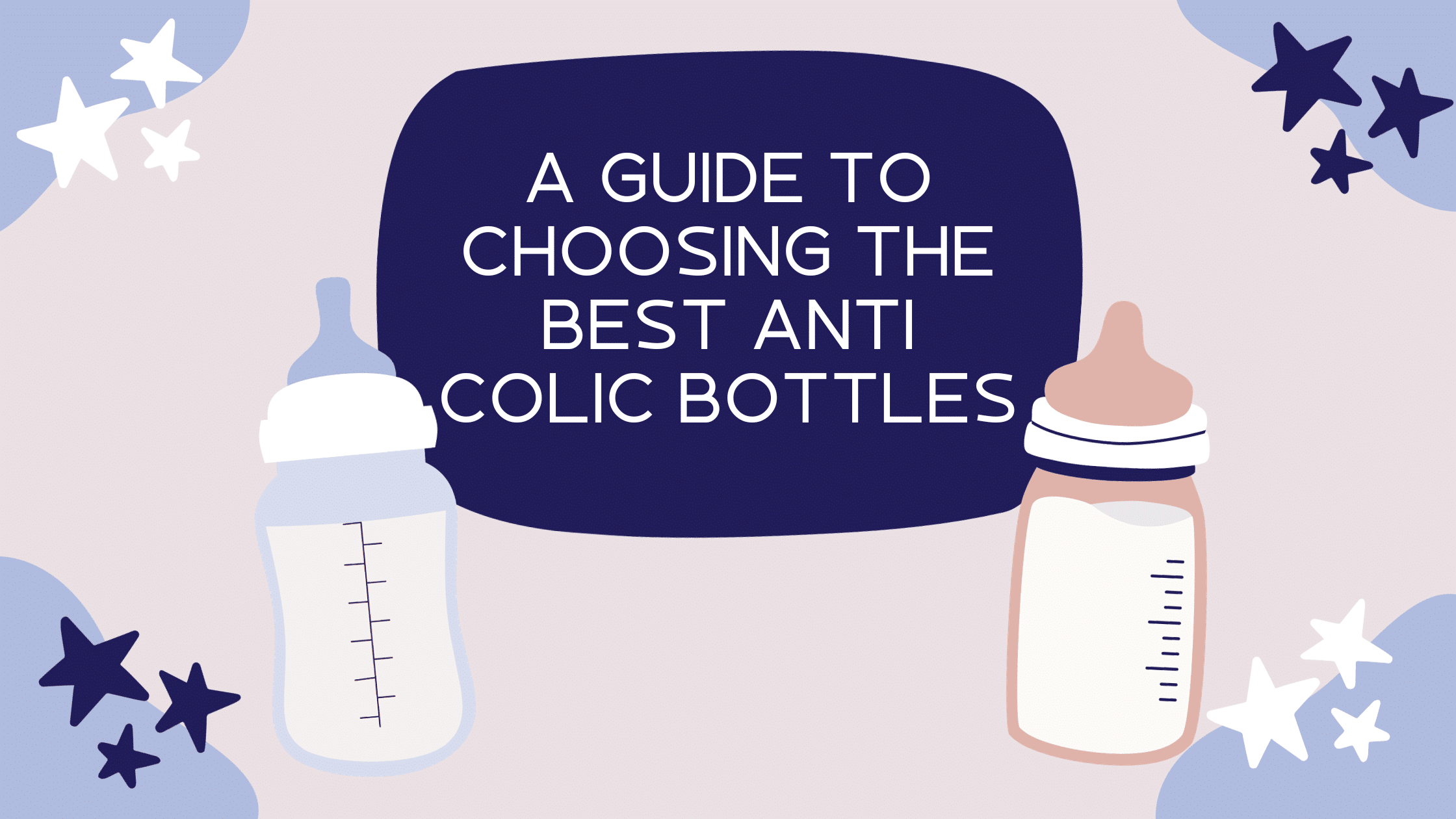Being a new parent can be distressing, especially when you see your baby in discomfort. Dealing with colic, which is characterised by excessive crying and fussiness, can be quite challenging.
Fortunately, there is a solution that can provide relief for both you and your little one – anti-colic bottles. But what exactly are anti-colic bottles?
I’m Joanna Coulthard, an infant feeding specialist based in the northeast of England, and I have extensive knowledge about colic in babies. In this blog post, we will explore the world of colic, including prevention methods and some of the most effective anti-colic bottles available on the market.
- What are Anti Colic Bottles?
- Understanding Colic in Babies
- The Importance of Choosing the Right Bottle for Colicky Babies
- Key Features to Look for in Anti-Colic Bottles
- Different Types of Anti-Colic Bottle Systems
- Tips for Using Anti-Colic Bottles Effectively
- How to Clean and Maintain Anti-Colic Bottles
- Other Strategies for Relieving Colic in Babies
What are Anti Colic Bottles?
Anti-colic bottles are specially designed feeding bottles that aim to reduce the amount of air your baby swallows during feeding. They are equipped with innovative features that tackle the main culprit behind colic – trapped air in the digestive system. By minimising the intake of air, these bottles help alleviate the discomfort associated with colic and promote a more peaceful feeding experience.
Understanding Colic in Babies
Before delving into the details of anti-colic bottles, it’s crucial to understand what colic is and how it affects babies. Colic is a condition that causes excessive crying and fussiness in infants, often occurring in the first few months of life. The exact cause of colic remains unknown, but it is believed to be related to digestive issues and an immature gastrointestinal system.
Babies with colic exhibit symptoms such as intense crying, clenching of fists, arching of the back, and difficulty in soothing. The episodes of colic typically occur in the late afternoon or evening, lasting for several hours. While colic is a temporary phase that usually resolves on its own, it can be incredibly distressing for both babies and parents.
The Importance of Choosing the Right Bottle for Colicky Babies
Selecting the right bottle for your colicky baby can make a significant difference in their comfort during feeding. Traditional bottles can contribute to the problem by allowing too much air to enter the baby’s digestive system, leading to gas and discomfort. This is where anti-colic bottles come to the rescue.
Anti-colic bottles are designed to minimise the intake of air, thereby reducing the chances of colic episodes. This not only provides relief to your baby but also gives you peace of mind as a parent.
Key Features to Look for in Anti-Colic Bottles
When shopping for anti-colic bottles, there are several key features to consider. These features play a crucial role in reducing air intake and ensuring your baby’s comfort during feeding. Here are some important factors to look for:
Easy to clean: Consider bottles that are easy to disassemble and clean. Proper hygiene is crucial to prevent the buildup of bacteria and ensure your baby’s health.
BPA-free materials: Opt for bottles made from BPA-free materials to ensure the safety of your baby. BPA is a harmful chemical that can leach into milk or formula, posing potential health risks.
Ergonomic design: Look for bottles with an ergonomic shape that is easy for both you and your baby to hold. This will ensure a comfortable feeding experience for both parties.
Venting system: A good anti-colic bottle should have an efficient venting system that allows air to escape from the bottle, preventing it from being swallowed by the baby.
By considering these key features, you can make an informed decision when choosing an anti-colic bottle that best suits your baby’s needs.
Different Types of Anti-Colic Bottle Systems
Anti-colic bottles come in various types and designs, each with its own unique system for reducing air intake. Understanding the different types can help you choose the most suitable option for your baby. Here are a few common types of anti-colic bottle systems:
Wide-neck bottles: Wide-neck bottles are designed to mimic the shape of a breast, making it easier for your baby to latch and reducing the chances of swallowing air.
Disposable liner bottles: These bottles use disposable liners that collapse as your baby feeds, preventing the intake of excess air.
Angled bottles: Angled bottles have a sloped design that keeps the nipple filled with milk, reducing the amount of air your baby swallows.
Air venting bottles: These bottles feature an air vent or straw that allows air to escape from the bottle, preventing it from entering your baby’s mouth.
Each type of anti-colic bottle system has its own advantages and disadvantages. Consider your baby’s feeding habits and preferences when choosing the most suitable system for them.

Tips for Using Anti-Colic Bottles Effectively
To ensure the maximum effectiveness of your chosen anti-colic bottle, here are some tips for using them effectively:
Nipple flow: Choose a nipple flow that matches your baby’s feeding pace. A slow-flow nipple can prevent your baby from gulping air.
Paced feeding: Practice paced feeding, where you pause and burp your baby at regular intervals during the feeding session. This helps release any trapped air.
Feeding position: Maintain an upright feeding position for your baby to minimise the intake of air. Keep the bottle tilted to keep the nipple filled with milk.
Proper assembly: Carefully follow the manufacturer’s instructions for assembling the bottle, ensuring all components are securely in place.
By implementing these tips, you can optimise the effectiveness of your anti-colic bottle and provide maximum comfort to your baby during feeding.
How to Clean and Maintain Anti-Colic Bottles
Proper cleaning and maintenance of anti-colic bottles are crucial to ensure your baby’s health and safety. Here’s a step-by-step guide on how to clean and maintain these bottles:
Air dry: Allow the bottle and its components to air dry thoroughly before reassembling.
Sterilise: Sterilise the bottle and its components by boiling them in water or using a steam steriliser.
Clean with a bottle brush: Use a bottle brush and mild detergent to scrub the inside and outside of the bottle, paying extra attention to the venting system.
Rinse with warm water: Rinse all the parts with warm water to remove any residual milk or formula.
Disassemble the bottle: Separate all the components of the bottle, including the nipple, collar, venting system, and bottle base.
Remember to clean the bottles after each use and to check for any signs of wear and tear. Regularly replacing worn-out parts ensures the optimal performance of your anti colic bottle.
Other Strategies for Relieving Colic in Babies
While anti-colic bottles can provide significant relief for your baby, there are additional strategies you can incorporate to ease colic symptoms:
Probiotics: Consult with your paediatrician about using probiotics, which have shown promising results in reducing colic symptoms.
Tummy time: Incorporate regular tummy time sessions to aid digestion and alleviate colic symptoms.
White noise: Use white noise machines or apps to create a calming environment for your baby.
Gentle movements: Engage in gentle rocking, swaying, or carrying your baby to soothe their discomfort.
Burping: Burp your baby frequently during and after feeds to release any trapped air.
By combining these strategies with the use of anti-colic bottles, you can create a holistic approach to relieve your baby’s colic discomfort.
While colic can be distressing, rest assured that with the right anti-colic bottle and a holistic approach, you can provide relief and comfort to your baby during this temporary phase. If you want to find out more about colic, be sure to visit my website for more details. I also provide handy e-books to help you and your baby along in your journey, be sure to check them out here.

